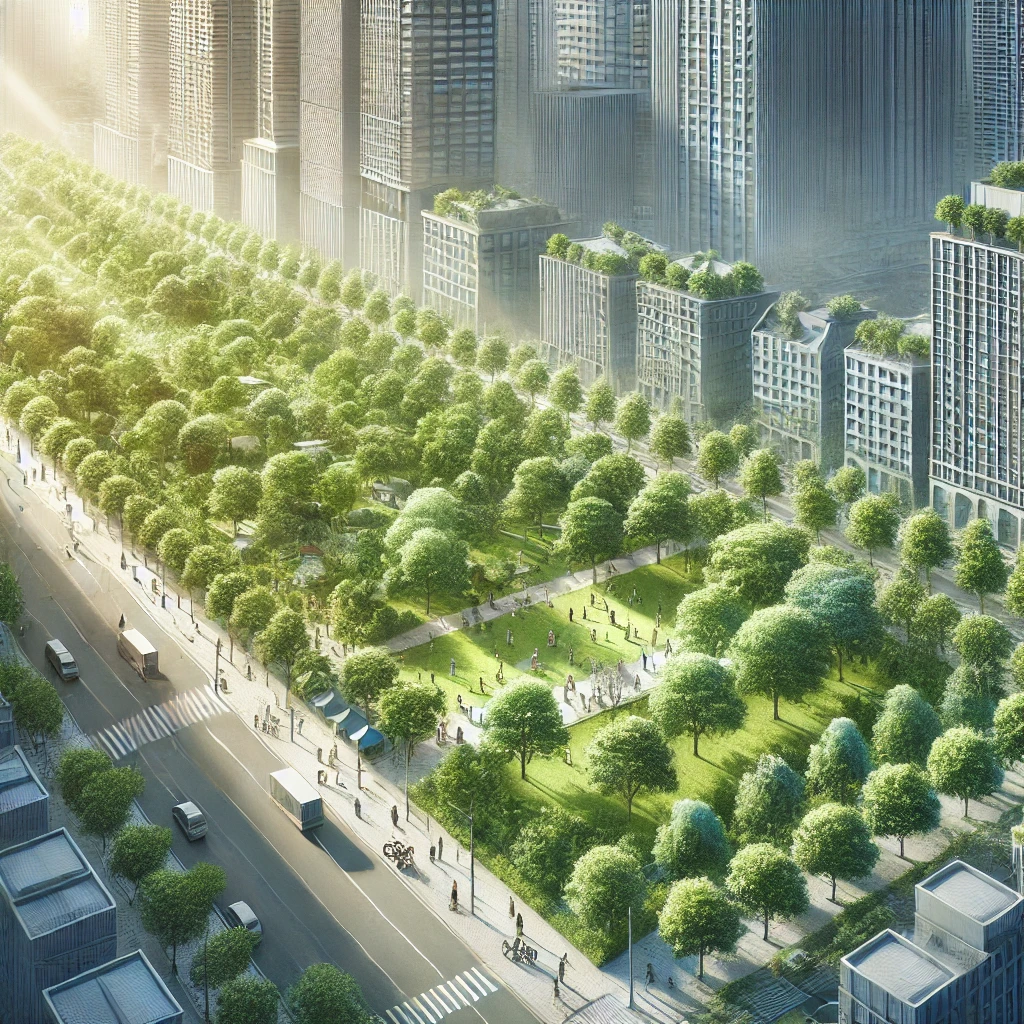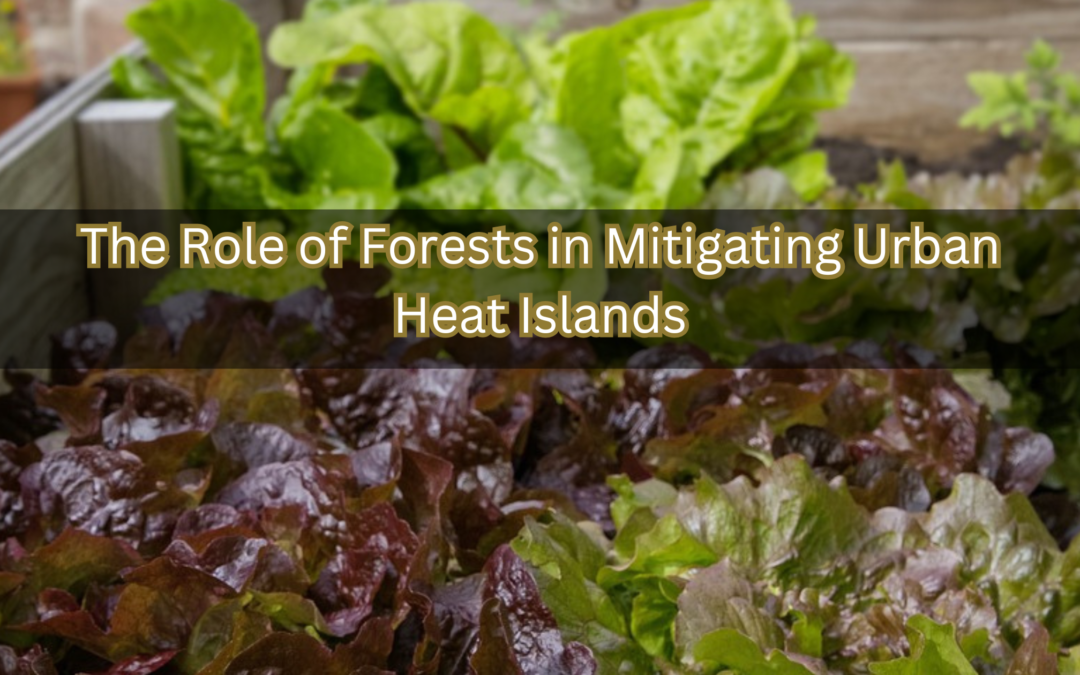Urban heat islands (UHIs) are a serious problem in many cities worldwide. If you live in an urban area, you’ve probably felt it—the difference in temperature between the concrete jungle and nearby rural areas. But here’s some good news: forests can play a significant role in mitigating urban heat islands. Let’s explore how trees help cities stay cooler, healthier, and more livable.
How Do Forests Help Mitigate Urban Heat Islands?
Urban forests are essential to reducing the impact of UHIs, and here’s why. Trees naturally cool the air through a process called evapotranspiration, as described by the US Forest Service, a natural process where trees absorb water through their roots and release moisture into the air. It’s like nature’s very own air conditioning system, keeping neighborhoods cool and comfortable, even on the hottest days.
Studies, like those from the Environmental Protection Agency, show that neighborhoods with a lot of trees and green spaces can be several degrees cooler than those made up mostly of concrete and asphalt. Just imagine the relief of a shaded park on a scorching afternoon compared to an exposed, sun-baked street.
Reducing Heat Absorption in Urban Areas
Have you ever noticed how streets and buildings stay hot well into the night after a sunny day? That’s because materials like asphalt, concrete, and brick absorb and store heat, releasing it slowly after the sun goes down. This is one of the key reasons behind the UHI effect.
Urban forests help reduce heat absorption by replacing these heat-trapping surfaces with vegetation. Trees reflect sunlight and release moisture, which cools the surrounding air. Integrating more parks, tree-lined streets, and green roofs into city plans, like the initiatives supported by American Forests, can make a huge difference in reducing the UHI effect.
Improving Air Quality with Urban Forests
Urban heat islands don’t just make cities hotter—they also contribute to poor air quality. The higher temperatures often lead to an increase in ground-level ozone and other pollutants. But here’s where forests come in as the unsung heroes. Trees act as natural air filters by absorbing harmful gases like carbon dioxide, sulfur dioxide, and nitrogen dioxide, and releasing clean oxygen, according to the Arbor Day Foundation.
This isn’t just a nice-to-have; it’s essential for the health of city residents. Cleaner air means fewer respiratory issues and heat-related illnesses, especially for vulnerable populations. By reducing air pollution, urban forests make cities healthier places to live.

Forests Enhance Urban Livability and Climate Resilience
Cities are getting hotter due to climate change, and heatwaves are becoming more frequent and intense. Urban forests are a powerful tool to combat this. Beyond cooling the air and cleaning it, they provide shade, improve mental health, and promote community well-being. Who doesn’t feel better after a walk through a tree-filled park?
Green spaces in cities are more than just pretty spots—they support biodiversity, help manage stormwater runoff, and reduce flooding. These benefits contribute to a more resilient urban environment, as detailed in studies by the Nature Conservancy. Forests act as a natural buffer, making cities better prepared to face climate-related challenges.
Urban Development Must Prioritize Forest Conservation
Reducing the urban heat island effect means integrating forests into city planning. Cities around the world are beginning to understand just how crucial green infrastructure is for mitigating climate change impacts. Urban planners need to focus on planting more trees, maintaining existing green areas, and designing cities with nature in mind. Check out ICLEI Local Governments for Sustainability for examples of how cities globally are prioritizing green infrastructure to reduce their environmental impact. By doing this, we can create urban spaces that are not only cooler but also more sustainable and enjoyable for everyone.
Take Action for Greener Cities
Urban forests are vital, and you can help make a difference. Whether it’s advocating for more green spaces, supporting local tree-planting initiatives, or just planting a tree in your yard, every action counts. Check out organizations like the Arbor Day Foundation and American Forests for ways to get involved and learn more about promoting urban green spaces. Together, we can push for greener, cooler, and more sustainable cities.
Joining the EAT Community is a great way to engage with like-minded individuals who are passionate about sustainable living, environmental action, and making a positive impact. By becoming part of the EAT Community, you’ll gain access to valuable resources, webinars, and discussions focused on ecolonomics, innovative solutions, and the intersection of ecology and the economy.
Visit EAT Community and be part of a movement that’s making a difference. Join today to learn, share, and contribute to a more sustainable future!
Related Articles and Resources:
- Urban heat islands (UHIs)
- Embrace Nature-Based Climate Solutions for Urban Resilience
- US Forest Service
- Why You Should Think About Greening Up With Your New-Build Project
- The Crucial Role of Mangrove Forests in Coastal Protection and Climate Adaptation
- Environmental Protection Agency
- American Forests
- Arbor Day Foundation
- The Nature Conservancy: A World Where People & Nature Thrive
- ICLEI Local Governments for Sustainability
- Arbor Day Foundation


Recent Comments